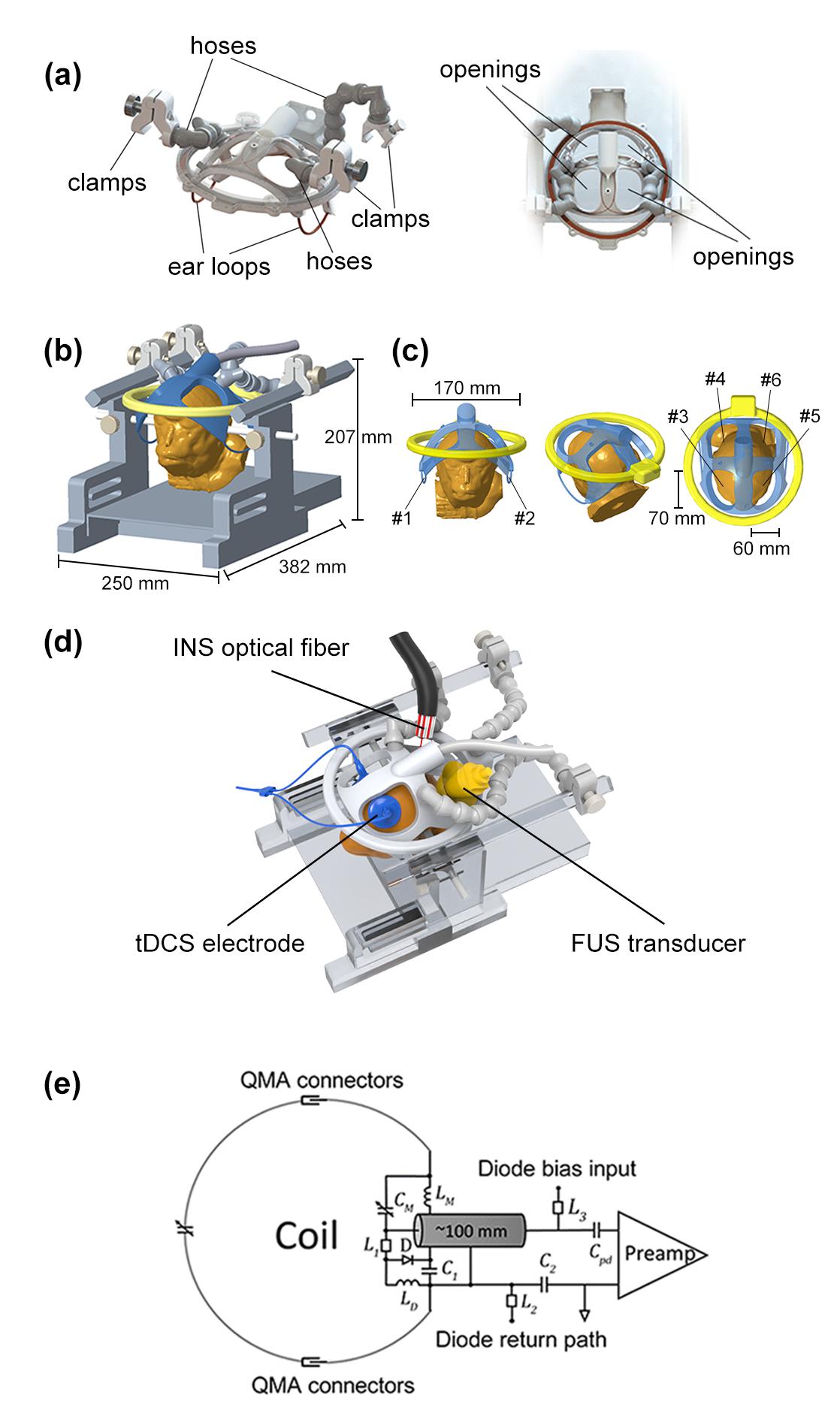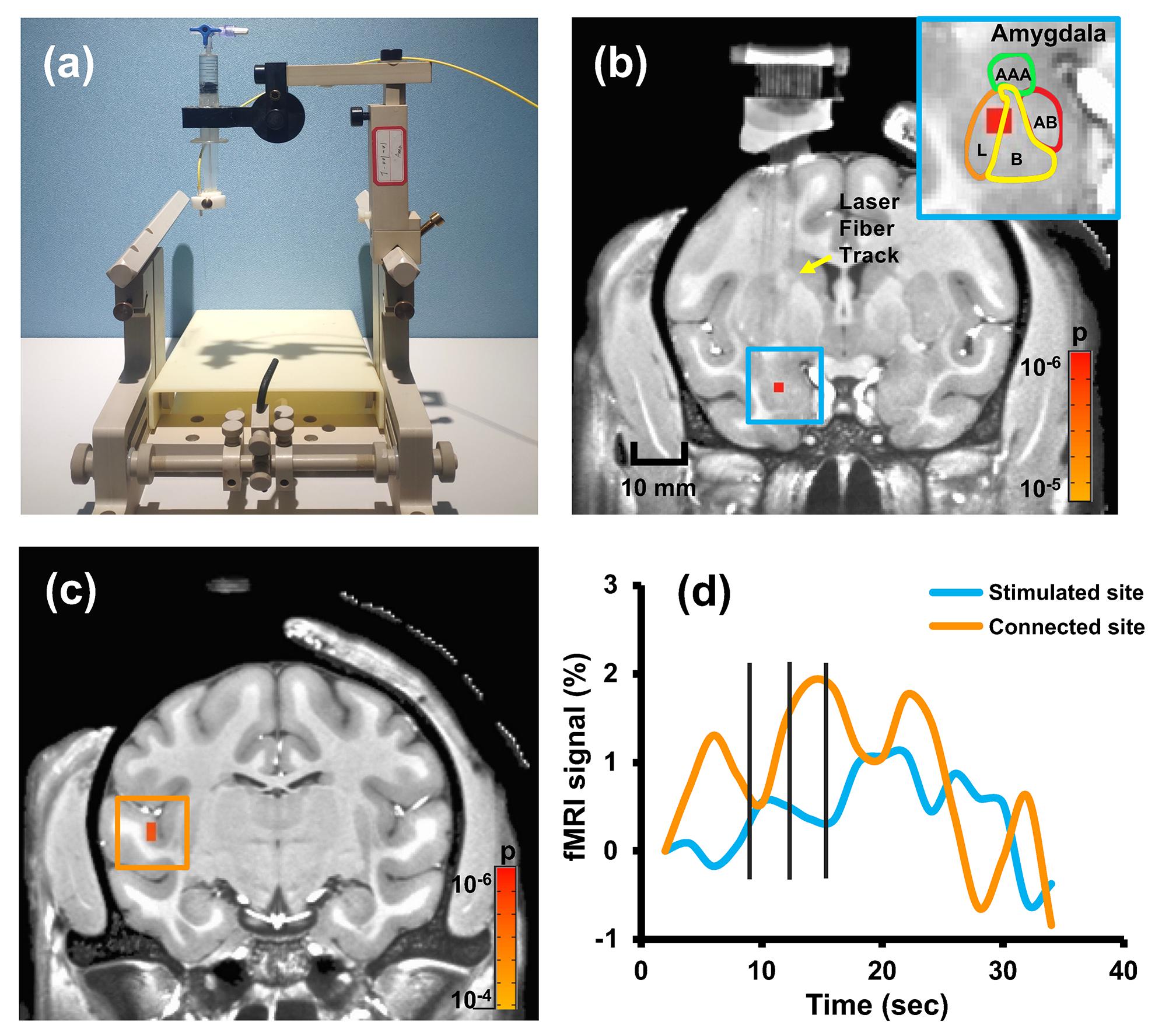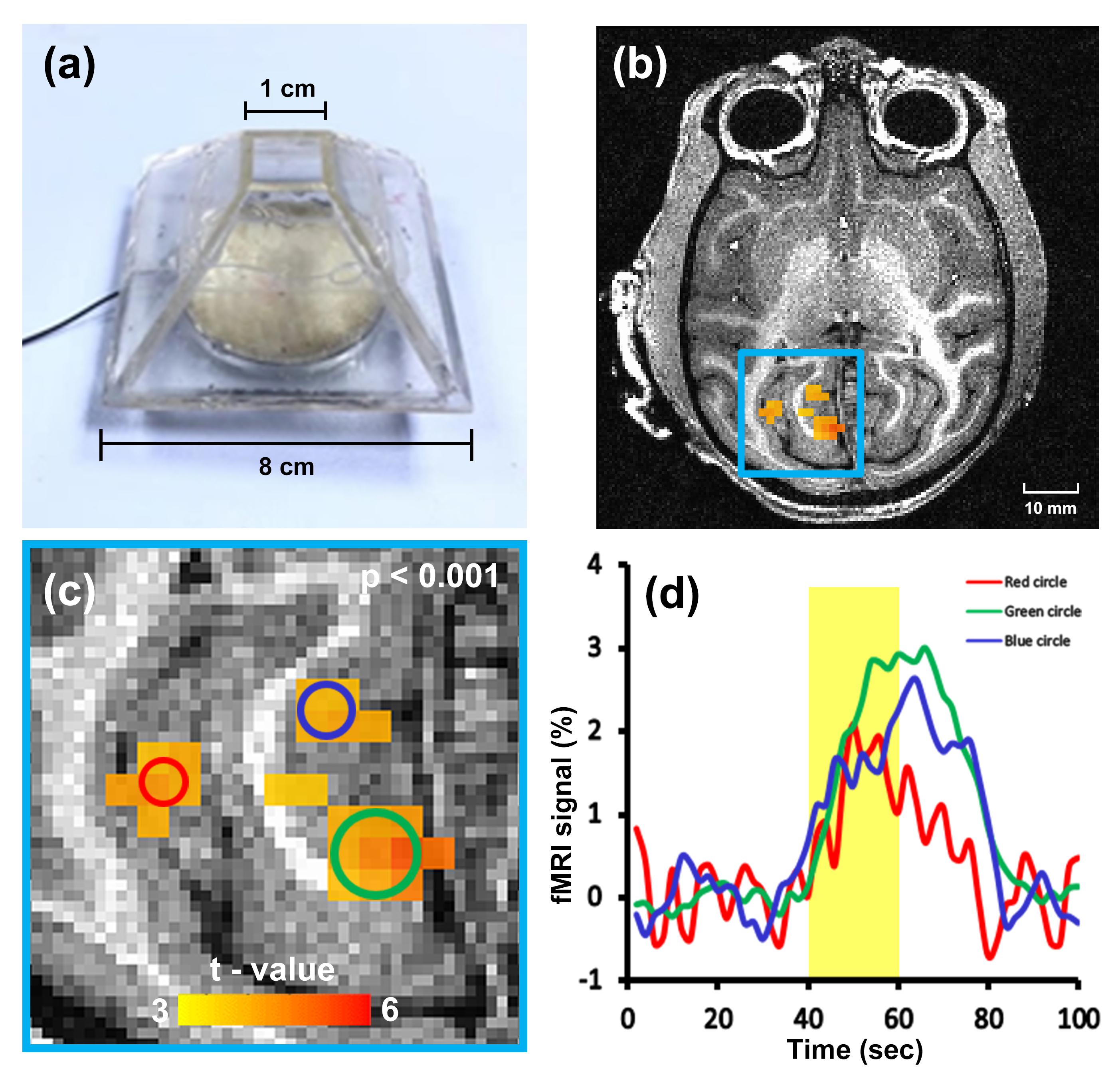Xiaotong Zhang’s group published in NeuroImage on multimodal neuroimaging
The research team led by Prof. Xiaotong Zhang has recently published an research article titled “Design and application of a multimodality-compatible 1Tx/6Rx RF coil for monkey brain MRI at 7T” on NeuroImage on May 25. This study proposed a RF coil design for macaque whole-brain imaging that is compatible with multiple neuroimaging and neuromodulation techniques.
Blood-oxygen-level-dependent functional MRI allows to investigte neural activities and connectivity. While the non-human primate plays an essential role in neuroscience research, multimodal methods combining functional MRI with other neuroimaging and neuromodulation enable us to understand the brain network at multiple scales. In this study, a tight-fitting helmet-shape receive array with a single transmit loop for anesthetized macaque brain MRI at 7T was fabricated with four openings constructed in the coil housing to accommodate multimodal devices, and the coil performance was quantitatively evaluated and compared to a commercial knee coil. In addition, experiments over three macaques with infrared neural stimulation (INS), focused ultrasound stimulation (FUS), and transcranial direct current stimulation (tDCS) were conducted.

Fig 1 The design of the proposed macaque RF coil.
The RF coil showed higher transmit efficiency, comparable homogeneity, improved SNR and enlarged signal coverage over the macaque brain. Infrared neural stimulation was applied to the amygdala in deep brain region, and activations in stimulation sites and connected sites were detected, with the connectivity consistent with anatomical information. Focused ultrasound stimulation was applied to the left visual cortex, and activations were acquired along the ultrasound traveling path, with all time course curves consistent with pre-designed paradigms. The existence of transcranial direct current stimulation electrodes brought no interference to the RF system, as evidenced through high-resolution MPRAGE structure images. This pilot study reveals the feasibility for brain investigation at multiple spatiotemporal scales, which may advance our understanding in dynamic brain networks.

Fig 2 Infrared neural stimulation (INS) experiment.

Fig 3 Focused ultrasound stimulation (FUS) experiment.
Ph.D. candidate Ms. Shuxian Qu is the leading author of the paper. This work was supported in part by STI 2030 - Major Projects, National Key Research and Development Program of China, National Natural Science Foundation of China and Zhejiang Provincial Natural Science Foundation of China, etc.
Link of the article: doi.org/10.1016/j.neuroimage.2023.120185.







